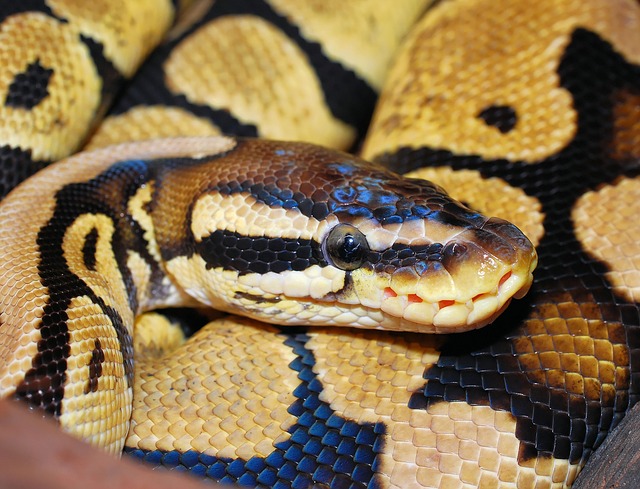When it comes to keeping ball pythons, many people are curious about how many can be kept together in one enclosure. The answer might surprise you. In this blog post, we will discuss the ideal number of ball pythons that can be kept together in an enclosure and why. We will also provide some tips on creating a successful ball python habitat.
Introduction
There is no definitive answer to this question, as different ball pythons have different needs and preferences. Some individuals may be happier in small groups, while others may do better as single animals.
Additionally, a number of other factors must be considered when deciding how many ball pythons are appropriate for a given enclosure.
These include the size of the enclosure, how much heat and humidity the snakes require, and what types of decorations or hiding spots are present.
Ultimately, the best way to determine how many ball pythons can live together is through careful observation and regular checks on their health and behavior. With careful monitoring of your snakes‘ needs and reactions, you can ensure that they thrive together while also promoting their overall wellbeing.
The ideal number of ball pythons that can be kept together
Although ball pythons are generally solitary creatures, they can be kept together in pairs or small groups.
However, it is important to carefully consider the number of snakes that will be kept together, as this can impact their health and well-being.
For example, keeping two male ball pythons together is generally not recommended, as they may become aggressive towards each other.
Additionally, keeping more than three snakes together can result in stress and territorial disputes.
As a result, it is generally best to keep a maximum of two or three ball pythons together.
With careful planning and attention to the needs of each individual snake, a small group of these fascinating creatures can provide hours of enjoyment.
Tips for creating a successful ball python habitat
When it comes to creating a successful habitat for ball pythons, there are many different factors to consider. To start, you will need to choose the right substrate – something that offers a combination of moisture retention, cleanliness, and absorbency.
A wide range of substrates is suitable for ball pythons, including peat moss, vermiculite, shredded newspaper, cypress mulch, corn cob, and hemp bedding.
Additionally, every habitat should include hiding and perching spots for your snake. These can be created with artificial plants or branches from safe trees.
Finally, the temperature is another crucial factor in creating an ideal ball python habitat. Ideally, the enclosure needs to mimic the snake’s natural environment by providing both sunlight and heat lamps or pads. With these tips in mind, you can create a great habitat for your pet ball python and help ensure its long-term health and happiness.
The size of the enclosure to the number of ball pythons
When it comes to choosing the right enclosure for housing ball pythons, there is no single perfect size that will work for every snake. In general, larger enclosures are recommended for adult snakes, while smaller enclosures may be required for juvenile snakes and hatchlings.
Factors that can affect the size of the enclosure required include the number of snakes, the activity level of the snakes, and the temperature requirements of different species. However, some general guidelines can help to give you an idea of what range to look for when it comes to choosing a cage for your ball python.
For instance, a standard enclosure size for one adult ball python should be around 30-50 gallons in volume. This will provide plenty of space for your snake and helps to ensure that there is enough room for food or water bowls as well as bedding materials or substrate.
When it comes to multiple snakes, however, you will need to consider factors such as whether two cages can easily be set up next to each other or if there is space available in your home for a larger enclosure.
Generally speaking, we recommend at least 100 gallons per adult ball python when housing multiple snakes together. Additionally, different species may have different temperature requirements and should be kept accordingly.
Conclusion How many ball pythons can be kept together?
The optimal number of ball pythons that can be kept together in a single enclosure depends on a number of factors, including the size and age of each snake, as well as the type of enclosure being used. In general, younger and smaller snakes will do best when kept in larger groups, while older and larger snakes will fare better when kept in pairs or small groups. In addition, certain types of enclosures are more suitable for housing multiple snakes at one time. For example, glass terrariums allow for good airflow and make it easy to monitor each animal’s health and behavior, while plastic tubs tend to cause higher stress levels in their inhabitants. Ultimately, the optimal number of ball pythons that can be housed together depends on each individual animal and its specific needs.




